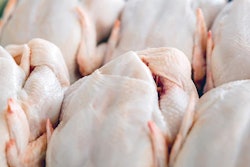
After a period of rapid expansion, the poultry industry in Jordan is showing signs of returning to more balanced production.
Output of poultry products in the Arab Kingdom of Jordan is forecast to fall by between 10 and 15 percent in the short term, according to the USDA Foreign Agricultural Service (FAS).
A recent GAIN report by the FAS forecasts that the market will normalize by early 2019 as many smaller producers quit the industry.
Attracted to poultry production around 2013 by the prospect of good returns, these small-scale farmers contributed to over-expansion in the sector, which led to lower prices that do not cover production costs. Attempts by large integrators to curb production are only now beginning to be effective. The local FAS office reports 60 percent egg production growth over the last two years to just under one billion eggs per year.
With an investment of US$3-4 billion, poultry production is the kingdom’s largest agricultural business.
With a severe degree of water shortage across the country, Jordan is dependent of imports of grains and other feed ingredients. Local corn production is negligible, and FAS forecasts the country’s requirements will be 635,000 metric tons in the current marketing year just started. Due to the contraction of the poultry sector, this is around six percent less than the previous year.
One year ago, Jordan Times reported that the Kingdom was seeking to export live chickens and sheep to the United Arab Emirates and Qatar, among others.
At that time, official figures put the value of the sector at JOD2 billion (US$2.8 billion), directly supporting 15,000 families. Of the country’s 2,689 poultry farms, around 2,300 produced meat chickens, 280 had laying hens, and there were 113 breeder units. There were 80.5 million chickens on 4,972 poultry complexes.
Most recent figures from the statistics arm of the United Nations’ Food and Agriculture Organization, FAOstat show a progressive decline in Jordanian egg production from around 1.137 billion in 2011 to 703.4 million in 2013. Chicken meat output in the Kingdom, however, increased from 118,000 metric tons in year 2000 to more than 197,000 metric tons in 2013, according to the agency’s calculations.

















